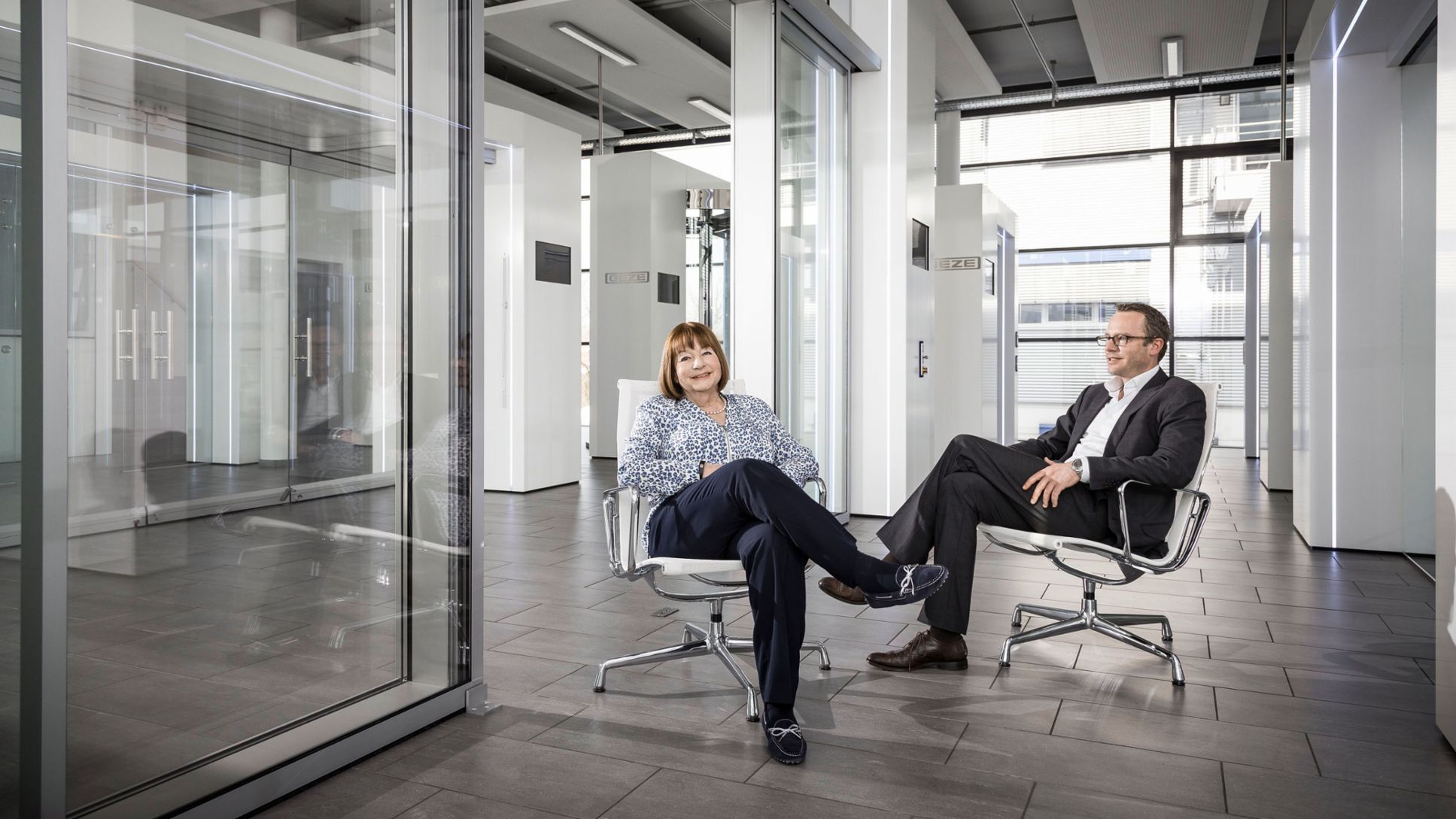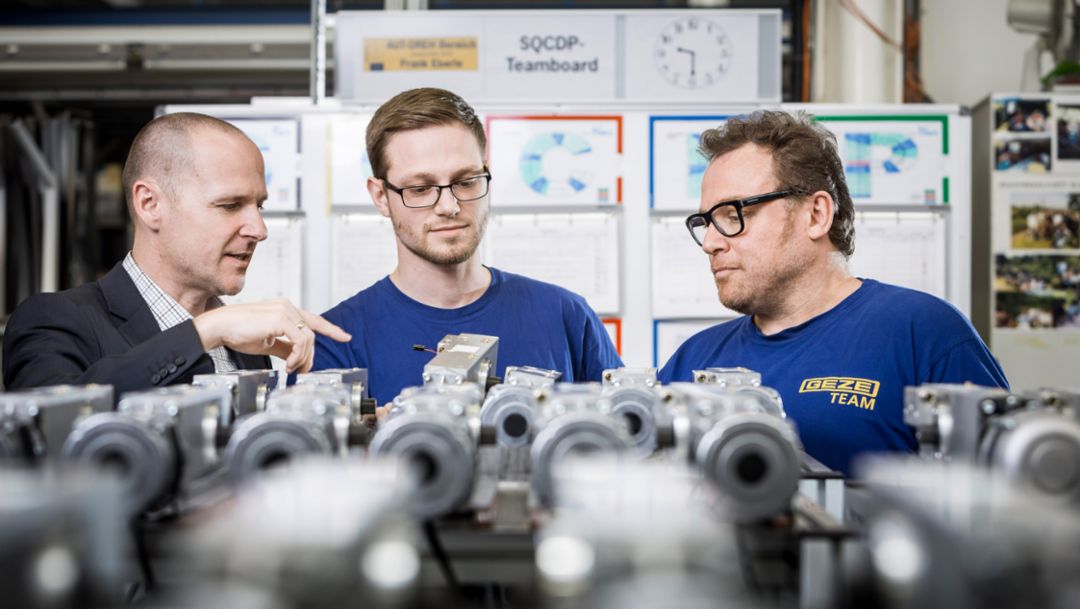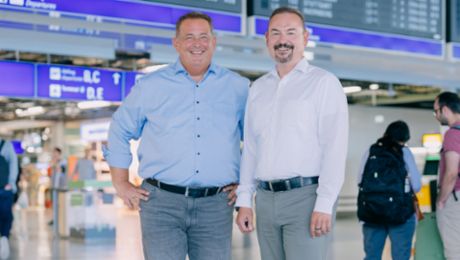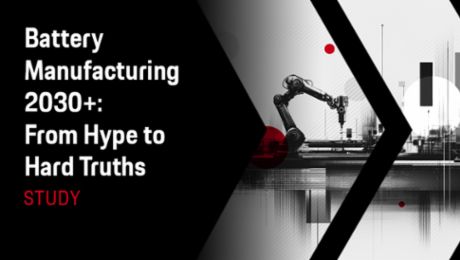There’s never any shortage of ideas. “We are constantly expanding our field of business,” says Brigitte Vöster-Alber, CEO of GEZE GmbH, a leading supplier of automatic door systems and building technology. “Always in motion – this was also the slogan at our recent anniversary celebration in 2013.” At 71 years of age, the head of this 2,600-employee company in the Swabian town of Leonberg near Stuttgart leads the way here as well. According to her son Marc, she used to ski “like a demon.” Moreover, she continues to follow the latest technological trends, and is constantly considering how they might be used for Geze.
And this works superbly. Geze is a long-standing company that can look back at 150 years of successful history. It all started with construction fittings. Because products of this type are sold primarily when the weather is good enough for building, the company soon started selling ski bindings in winter. The construction fittings turned into door systems of all types, and the only things that Geze removed from its portfolio were the ski bindings, in 1985. The market had made a major shift toward ski rentals, and the company’s business in this area was no longer profitable.
World’s leading premium supplier of building systems
Today, products from Geze ensure security and comfort in major pieces of architecture throughout the world. As the world’s leading premium supplier of building systems, the company has been instrumental in “smart buildings made in Germany” such as the Acropolis Museum in Athens, the Ferrari World theme park in Abu Dhabi, and famous cruise ships such as the brand-new Quantum of the Seas, which was built in 2014 for the Royal Caribbean cruise line at the Meyer Werft shipyard in northern Germany. In short, there is a very high probability of walking through a door with components from this Swabian company at least once a day – and not only in Europe – for Geze has long since become a world brand. Thirty subsidiaries in 110 countries represent the interests of this international market leader in innovation and design. Among other honors, the company received a Best Design Brand award in 2014/15 and a Top Innovator award in 2014.
This entrepreneurial family’s wealth of ideas is not limited to its Swabian inventive spirit, of course. The principle of constant innovation extends throughout all levels of the company structure. “When you have such a long-standing history of production like we do,” says Vöster-Alber, “you reach a point when you tell yourself it can surely be done better and more efficiently these days.” It made sense to work together with Porsche Consulting – not only on account of geographical proximity but also and especially based on the positive experience of a joint project about ten years earlier.
Combination of ownership and management
It was important to the family to bring in external expertise. “We could no longer see the wood for the trees,” says Alber, who as Executive Assistant played a major role in guiding the restructuring of the company. Both mother and son view the combination of ownership and management as a crucial advantage. “You can achieve real sustainability with a company that is family-owned and run,” says Vöster-Alber. “We’re not dependent on quarterly reports and we’re not dependent on investors just waiting for their dividends, so we can take a truly longterm approach. And at the end of the day we can say that the money stays in the company.”
The family places a priority on precisely this long-term perspective. The restructuring project was not designed to show immediate results but rather to work on an enduring basis. Working together with the expert team for production management and factory operation, a site development program was drawn up with six stages of implementation, which combined the introduction of lean production with process-oriented organizational development. In addition to reducing production costs, it was intended above all to improve delivery performance.
A fundamental component of the new production strategy is flexibility. At Geze, flexibility is based on a special model. The production facility at the company headquarters in Leonberg takes the form of a factory that largely runs itself. To achieve this, the classic company hierarchy was split up and responsibility was delegated downwards. Under the direction of specially trained master craftspeople, centers of expertise were formed that are self-organizing and self-monitoring, and can therefore make their own decisions. This performance management approach uses key performance indicators to link the aims of the production strategy to the steps taken by a control system that is updated on a daily basis. Deviations are displayed in immediate and transparent form. That enables employees at all levels to contribute actively on their own initiative to the company’s success at all times.
Because the centers of expertise are autonomous, they can also do things like plan the schedules for their members. The production system for a portfolio that leads to around 20,000 different items will always have peak periods and low periods on individual assembly lines. Selforganization enables – and expects – employees to be flexible above and beyond their own teams. The system essentially subcontracts jobs within the same company. However, this only works if the employees are qualified to do multiple jobs. This too was a crucial component of the restructuring project. As Alber sums it up, “It generated an incredible dynamic. The employees are more motivated and committed because they no longer run up against any obstacles. We are now in a position to grow without having to hire large numbers of new employees.”
Productivity has increased by 15 percent
Production times have been considerably shortened with the help of auxiliary measures. For example, machines were adjusted to be mutually compatible and sequentially aligned. The processes became more stable, and down times were reduced. This adjustment process had no negative effects on delivery performance. On the contrary, “it is now considerably higher,” says Vöster-Alber. With the new approach, productivity has increased by 15 percent, and production backlogs have been significantly reduced. As Alber adds, “One of the key performance indicators tracks the backlog in hours for customer orders. When we started we were at 2,000. Now we’re all the way down to 200.”
The long-term success of the restructuring project is monitored by the GVP team, which stands for “Geze Improvement Process” in German. Formed together with Porsche Consulting, this team trains all employees throughout the company – including internationally – on a weekly basis. The goal is to extend the ideal of operational excellence to every corner of Geze, not only in production but also in administration. “And that is working very well,” remarks Vöster-Alber.
Always in motion
And then the senior partner’s eyes shine as she starts to talk about the next ideas again, such as having all Geze products, from security checkpoints to fire protection, interlinked in an overall building management system. “We’re already very far along,” she says, “but part of it will still require some effort.” The aims are specified in the company’s confidential strategy plan for 2020. With a smile, Vöster-Alber reveals only the key element: “Always in motion.”
Info
Text first published in „Porsche Consulting - THE MAGAZINE", Issue 16
Author: Peter Weidenhammer // Photos: Olaf Hermann





